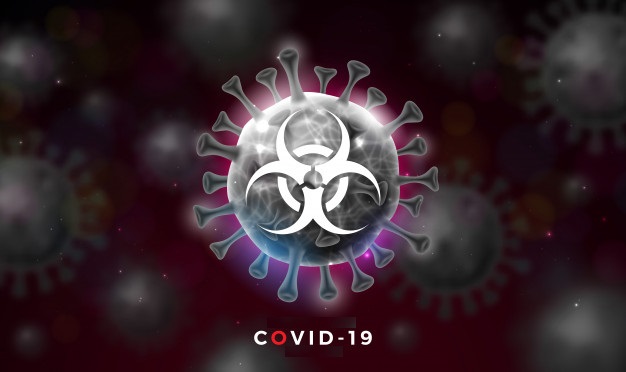
Facts and 5 funny Common Myths about Coronavirus
A virus is a neutral being, not a non-living thing but not fully a living thing either. It has DNA but basically nothing else that qualifies as a living thing. It feeds and reproduces only with the help of its host. They use specific weapons in order to infect a cell. A virus consists of nucleic acids (its DNA or RNA), its proteins capsule, which contains the nucleic acid, and finally the lipid coat of the virus.
A virus replicates itself in two different ways, the lytic cycle and the lysogenic cycle. The lytic cycle involves a virus infecting a cell, then replicating itself in the cell, and finally bursting its replicates out of the cell (Destroying the cell). Then there is the lysogenic cycle in which the virus replicates itself in the cell, and waits for the cell to continuously divide itself. The end result being the virus infecting all the cells.

Coronavirus is a family of viruses that were first discovered in 2003 during the SARS Epidemic, and nine years later when MERS first emerged. It’s called a coronavirus because “corōna” means “crown” in Latin.
SARS is the first identified case of an existing coronavirus. Discovered in 2003; Severe Acute Respiratory System – Symptoms include Pyrexia, Malaise, Fatigue, and body ache. MERS is the second identified case of a coronavirus, it was discovered in 2012; Middle East Respiratory Syndrome. COVID – 19 is one such virus that belongs to this family. COVID – 19 was identified first in Wuhan, China. Its origins being in Bats and Pangolins, Cows, Camels, and most other Mammals according to the World Health Organization(WHO). The symptoms of COVID – 19 include Mild Pyrexia, Coughing, Shortness of Breath, Persistent Pain, Chest Pressure, New Confusion, Cyanosis. Scientists estimate that the virus will be terminated in the Early 2021’s.
This virus mostly targets the elderly and young children. COVID – 19 could be transmitted by a person coughing or sneezing. The current coronavirus epidemic has some people confused about what exactly COVID – 19 is, therefore there is many myths regarding the coronavirus. Here are five common myths about the coronavirus that have been debunked by the World Health Organization.
1. 5G networks do not spread the coronavirus. Many people believe that the coronavirus has the ability to travel radio waves, however this is not the case; Coronavirus spreads through the droplets that form when a sick person coughs or sneezes.
2. Exposure to temperatures higher than 25 degrees Celsius does not prevent the spread of the coronavirus. The coronavirus will spread in whatever temperature there is.
3. It is possible to recover from the coronavirus, if you catch it it does not remain with you for the rest of your life.
4.Spraying alcohol or chlorine all over your body will kill the coronavirus. Spraying alcohol or chlorine all over your body will not kill viruses that have already entered your body. Not only that, but these substances can be harmful to your mucous membranes (not to mention your clothes). Both alcohol and chlorine disinfect surfaces, but they need to be used correctly
5.Eating garlic can help to prevent from coronavirus infection,Garlic has some antimicrobial properties. However, there is no evidence from the current outbreak that eating garlic has protected people from the new coronavirus
How to Protect Yourself from Covid-19:
COVID-19 affects different people in different ways. Infected people have had a wide range of symptoms reported – from mild symptoms to severe illness.The symptoms that are currently being seen with COVID-19 are fever and respiratory symptoms such as cough and shortness of breath,Diarrhea and as more time passes more symptoms are being discovered. To help prevent the spread of germs, we should adopt the following practices:
- Multiple times a day, wash your hands often with soap and water for at least 20 seconds, especially after going to the bathroom, before eating, and after blowing your nose, coughing, or sneezing.
- Avoid close contact with people who are sick.
- Avoid touching your eyes, nose, and mouth with unwashed hands.
- Clean and disinfect frequently touched objects and surfaces.
- Use an alcohol-based hand sanitizer with at least 60% alcohol if you have symptoms of acute respiratory illness.
- Stay home from work or school until you are free of fever, signs of a fever, and any other symptoms for at least 24 hours and without the use of fever-reducing or other symptom-altering medications.
- Seek medical attention if you have reason to believe you have been exposed to coronavirus or influenza. Call your healthcare provider before visiting a healthcare facility.
References:
https://www.worldometers.info/coronavirus/. : Real time statistics and coronavirus news tracking
https://www.who.int/emergencies/diseases/novel-coronavirus-2019/advice-for-public/myth-busters
![]()
Discover more from Shaivam Kale
Subscribe to get the latest posts to your email.